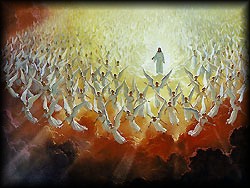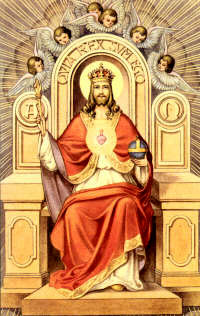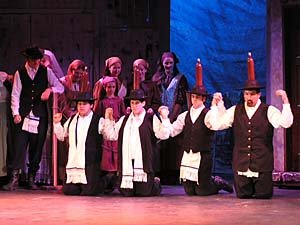Sto. Nino (Proper to the Philippines)

History
The Feast of the Sto. Nino is a feast proper to the Philippines, meaning that it is celebrated only in the Philippines. It is special to the Philippines because it is connected to the history of our country.
On March 16, 1521 Magellan was the first European to set foot on the Philippines. On April 14 he arrived in Cebu and there converted Rajah Humabon and his wife Queen Juana as well as their 800 people. After the baptism, Magellan gave Queen Juana a gift, the statue of the Sto. Nino. What Queen Juana did was to put the statue where there used to be the idols that they worshipped.
Today the Sto. Nino is enshrined in the minor Basilica of the Sto. Nino. And every third Sunday of January the Sto. Nino is honored with a festival that is called Sinulog.
Theological Reflection
Douglas Elwood and Patricia Magdamo wrote a book in 1970, Christ in the Philippine Context. They observed that two favorite images of Filipinos are the Sto. Nino and the Santo Entierro. The first is the child Christ and the second is the Dead Christ. And they asked: “What does this say about Filipino Catholics?” We forgot about the adult Christ. And our faith has remained immature and infantile.
I have my own interpretation. I think that the Sto. Nino is dear to us because we love children. We are also devoted to the Santo Entierro and to the Poon Nazareno for that matter because we can relate to the suffering Christ. We are after all living in a third world country where economic hardship is a fact of daily life. And because Jesus knows what suffering means, he is able to sympathize with us. Consequently, we find it so natural to approach the Santo Entierro and the Poon Nazareno in the midst of life's challenges.
Folk Religiosity
A few nights ago I happened to see on TV a documentary on a medium who claims to receive messages from the Sto. Nino. The clips showed the Sto. Nino rocking sideways. Of course, the medium was touching the base of the statue. In the past we have heard news of a dancing Sto. Nino. More common is the news of people whose voice changes because the Sto. Nino is said to speak through him. We have reason to question the authenticity of these claims.
There are the Sto. Nino de Cebu and the Infant Jesus of Prague. But do you know that there is such a thing as Sto. Nino de la Swerte? He is clothed in green (the normal color is red.). He is holding a pouch containing coins. This Sto. Nino is supposed to bring good luck (swerte). Who invented this Sto. Nino, I do not know.
Here is the case for the need for a solid grounding in the Catholic Faith. For unless there is sufficient grounding we would expect aberrations such as these to continue.
Child-like Not Childish (Tulad ng Bata, Hindi Isip-Bata)
Jesus said that unless we change and become like little children, we can not enter the Kingdom of God. He also said that the Kingdom of Heaven belongs to people who are like them. Obviously, Jesus is thinking of specific characteristics we associate with children.
I should like to think that dependence on God is one of them. Now I do not mean to say that we leave everything to God and nothing to ourselves. The saying "Nasa Diyos ang awa. Nasa tao ang gawa" (We rely on God's mercy but we still have to work.) holds true.
Scriptures remind us that unless the Lord builds the house they labor in vain who build it. I should like to think that this expresses what dependence on God mean. To illustrate, in our church people offer Masses for a variety of intentions. One intention would be passing the board exams. Another would be healing. Still another would be a blessing on one's birthday. We express our dependence on God by invoking his blessing and asking for his help.
Conclusion
After I read the life of St. Therese of the Child Jesus, I immediately liked her. I mean I was able to relate with her. Hers was a spirituality that was so simple and unencumbered. She taught me the spiritual life and all our life for that matter is letting God and letting go. She painted an image of her child-like spirituality as God coming down the staircase and carrying you in his arms bringing you up the same staircase. I altered it a bit since I could not relate to the image of being picked up like a child. This is how I see it: God comes down the staircase. He takes me by the arm and together we climb the stairs.
As long as we need God, there will be a place for him in our life. Woe to us if we outgrow the need for God. There will be no place for him in our life.

















